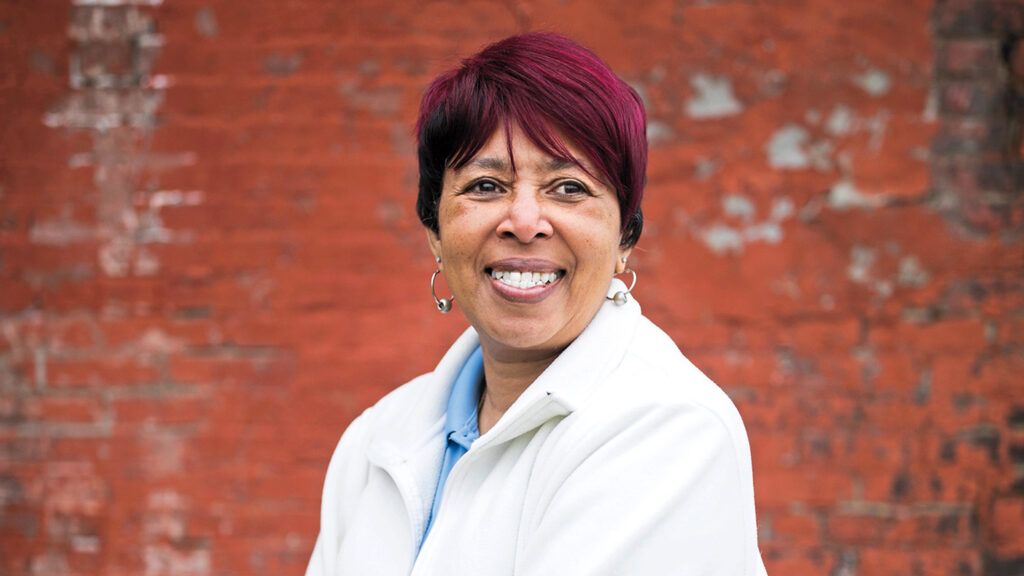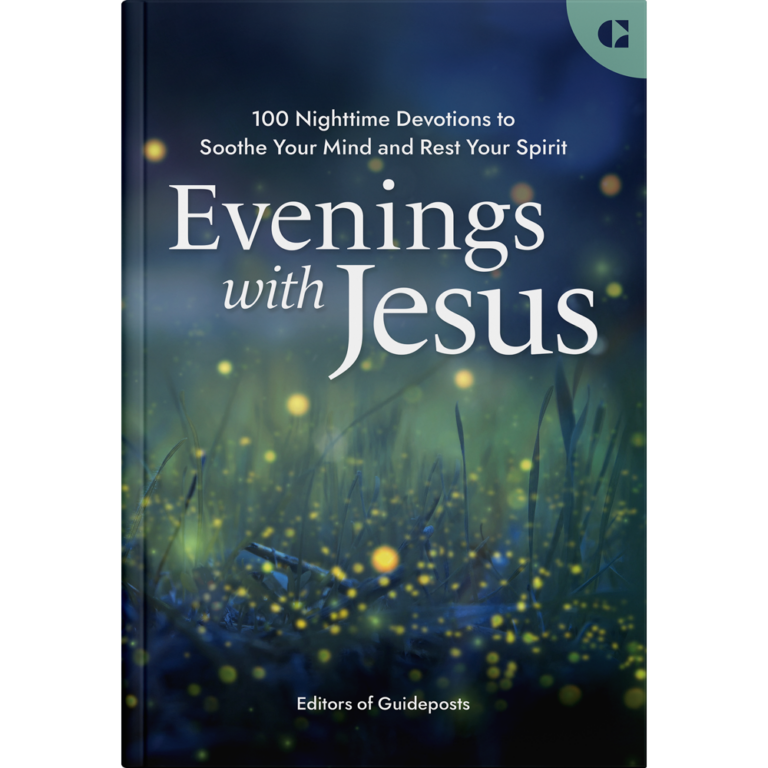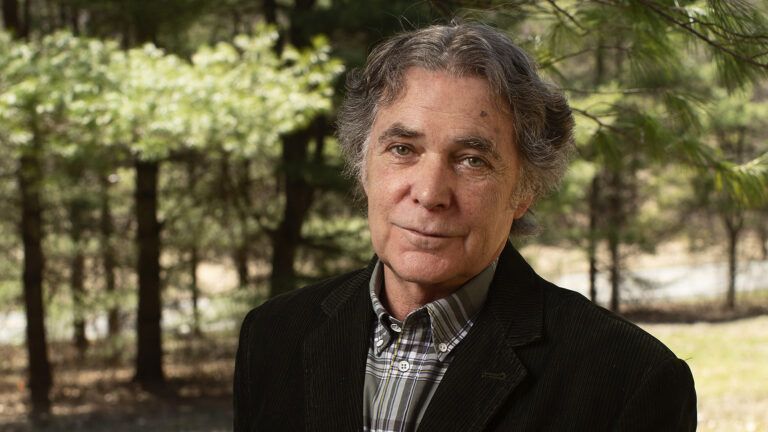I stared down at the golf ball atop its tee. My hands tightened around the grip of my club. I tried to recall the coach’s advice on how to actually hit this thing.
I swung my arms downward as fast as I dared. Thud! The club bit into the grass just shy of the tee. A total miss. I could feel the eyes of the seven other female veterans on me. “What am I doing here?” I muttered.
It was the same thought I’d had 20 years earlier, when my unit landed in Saudi Arabia.
I’d joined the Army Reserve on a whim, looking to inject a little excitement into my life. The training exercises were one weekend a month. I was 35. Single. A phlebotomist at a hospital. I knew Reserve forces were the first to get the call if the U.S. were ever in a full-on war. But what was the chance of that? It was 1987. There hadn’t been any major military conflict since Vietnam. Besides, I imagined there’d be some kind of exemption for an older woman like me.
I made it through basic. My unit was the 350th Evacuation Hospital in Canton, Ohio. My job in radio communications was to deliver messages from combat units to hospital staffers. Our weekend exercises were only drills. Still, it felt good knowing my superiors put that kind of trust in me. I loved the challenge and the camaraderie with the other men and women in my unit.
Two years after I signed up, I met a guy I really liked. He thought it was cool that I was in the military, and we soon got married.
In August 1990, Iraq invaded Kuwait, not that I paid much attention. Seemed like those Middle Eastern countries were always fighting.
Just before Thanksgiving, I got a call at work. I had two days to report for duty. My hand was shaking so badly, I could barely hang up the phone.
“I’ve just been called up for active duty,” I told my husband. “Like for a real war.”
“Don’t worry,” he said. “I’ll hold down the home front.”
Six weeks later, I was in the desert, in northeast Saudi Arabia, a two-hour drive from the Kuwait/Iraq border. We slept in tents in the sand, nearly 200 doctors, nurses and support staff. A fully staffed hospital. A different world from Ohio. By 10 a.m., the sun was broiling. After dark, I shivered through the night.
Despite my training in radio communications, I was assigned to drive an ambulance, a top-heavy truck with a manual transmission. I prayed I’d never have to transport any casualties.
One day my co-driver, Elliott, and I drove about a half hour to get gas. In every direction there was only desert. No landmarks to get your bearings, not even a road sign. We got to the fuel depot, which was bustling with Saudis. Elliott got out to fill the tank. I looked around, nervous. We weren’t armed.
Suddenly my door was yanked open. “You come with me,” a man said.
“Get away from me!”
He grabbed my arm. “I buy you,” he insisted. “You come with me.”
Just as I was trying to break free, Elliott climbed back inside the ambulance. He slid his hand into mine. “We’re together,” he said. “Now leave us alone.”
All the way back to the evac hospital, I couldn’t stop shaking.
I was reassigned to administration. Mid-January, I was in the base movie tent when the entire sky lit up. Then came a deafening explosion. The ground shook. “We’ve started bombing,” someone said. All night long, the bombs fell. We grabbed the gas masks we’d been issued. I begged God to keep us safe. No one slept. For 42 days straight, the bombing continued. Scud missiles tore through the sky in response. There was no way to know if or when we’d be targeted.
I wrote letters home but couldn’t tell my husband everything. I didn’t want him to worry. The first casualties were Iraqis. One day an entire Iraqi platoon showed up, wanting to surrender.
In May, our deployment ended. I was never so happy to get back to Ohio. I’ve left the desert behind, I thought.
One day I was at the gas station when a man approached. Just like that, I was back in Saudi Arabia, back at that depot, the fear every bit as intense. I sped home. That was the last time I went to a gas station. “You’re not in the desert anymore,” my husband said. “Nothing’s going to happen to you here.”
I knew he was right. But my fear only grew. Noisy restaurants made me jumpy. I couldn’t sit in a dark movie theater. Hated crowds. The only places I felt safe were work, church and home. Back then, no one talked about PTSD. I was afraid to mention what I was going through. People would think I was crazy, right?
The only other place I went was the 350th’s training exercises. There things felt familiar. Other reservists were having problems readjusting as well. We tried to boost each other up. But we met only once a month, not enough to make a difference.
One weekend, some six years later, a therapist came to the 350th and talked about mental health programs available at VA hospitals. Afterward, she came up to me. “How are you?” she said. “You seem stressed.”
“I have flashbacks,” I said. “Nightmares. Headaches.” She gave me the name of a group therapy program for women veterans. I went weekly and began taking an antidepressant. The therapy and meds helped. But only some.
My husband asked for a divorce. I didn’t blame him. I was so messed up, I wouldn’t want to live with me either.
In 2000, I got news that I would be deployed to South Africa in support of a different unit. I couldn’t do it. I left the Reserve. I was 48, but I felt like I was 78. I’d given up on everything that mattered to me. Even praying. If God was going to help me, he was taking his sweet time. The one good thing that happened was I got a job at the VA as a med tech. At least I was doing something for other veterans.
One day in 2011, the phone rang. I almost didn’t answer. I didn’t recognize the number. Turned out to be Hollis Burkes, a veteran I knew a little. She’d served in Desert Storm too. She was a detective on the Canton police force.
“A group of us women vets are taking golf lessons,” she said. “It’s a fun way to support each other. You should join.”
“No, thanks,” I said. “Golf is something rich yuppies do.”
Hollis laughed. “I’m hardly rich,” she said. “C’mon—the woman who runs the golf course will teach you everything you need to know.”
She wouldn’t let me off the phone until I agreed to try. The program, Clearview HOPE—for Helping Our Patriots Everywhere—was led by Renee Powell, the second black woman to play on the LPGA Tour. Her father had built the Clearview Golf Club when he came back from World War II and found there were many courses where blacks were not welcome to play. Hollis golfed there. Renee wanted to do something for veterans. They came up with this idea. Now I was at the first tee at Clearview, embarrassing myself. “Widen your stance,” Renee said. “You need to hit through the ball.” I tried again. This time my club actually made contact. The ball flew off the tee. Then plunked to the ground a few feet away.
Some of the women were nearly as bad as I was. Still, I went home vowing never to golf again. But it had been fun to hang out with other women veterans. Even flailing away at the tee had been fun. I went back to Clearview. Managed to hit the ball a few more times.
The conversations made me keep coming back. With women like Christine Cameron. She’d served overseas in the Air Force in the 1980s and experienced trauma that she struggled to put behind her. There were other women having nightmares, just like me.
Here was the same camaraderie I’d found in the Reserve, but it wasn’t about working together as much as being there for each other. We were all hurting, and knowing we weren’t alone helped each one of us.
After a few weeks, I felt my fears easing. At Clearview, my headaches were gone. I found myself laughing, even though my golf skills didn’t seem any better. For the first time in 20 years, I had something to look forward to.
Late that summer, I stood once again at the first tee. How would I mess up this time? I pulled the club back and swung, my arms straight, whipping across my body. The ball shot sailed through the air, over the hill, out of sight.
The other women cheered as though I’d hit a hole in one. I couldn’t believe it!
As we walked to our balls, Christine turned to me. “You’ve helped me so much,” she said. “I didn’t think I’d be able to do this, but watching you gives me strength. You’re always upbeat.”
I hadn’t realized I’d done anything. A golf course was the last place I expected to find healing, but the Lord knew exactly what I needed. It gave me such a feeling of accomplishment to know that with slow persistent effort and support from friends, I could do what I’d thought was impossible: conquer PTSD.
Today there are more than 50 women in the Clearview HOPE program. Even when it’s not golf season, we have regular get-togethers and talk on the phone. We represent every branch of the military, every level from grunts to officers. We’re there for each other, no matter what battles lie ahead.
For more inspiring stories, subscribe to Guideposts magazine.






